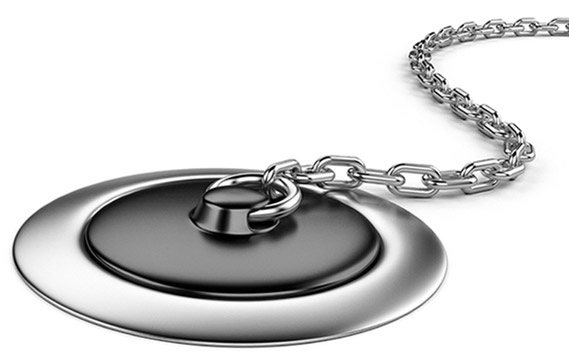Toilets
Toilet leaks are the most common type of leak found inside the home. Because this type of leak can be silent, it may go unnoticed. Understanding the basic mechanics of your toilet can save you thousands of gallons of water per year.
Step-by-Step Instructions
Perform a toilet dye test:
Lift the tank cover.
Place a few drops of food coloring into the tank.
Wait 15 minutes (do not use the toilet).
If the color appears in the toilet bowl, you have a leak.
IF you have a leak, check:
A. Overflow Tube: Water should be a half-inch below the top of the tube.
B. Lift Chain: It should not catch on anything.
C. Flapper: Ensure it is seating properly.
D. Flush Handle: Make sure it functions properly.
Toilet Maintenance tips:
Consider replacing your flapper every 3-5 years, as they are prone to warping and leaking. Putting chlorine products in the tank may decrease the life of your flapper.
Turn off the water at the supply line before removing tank parts.
To help you find the right replacements, take old toilet parts with you to the home improvement store.
Continue
Did You Know?
A leaking toilet can waste over 6,000 gallons per month.
That equates to as much as 72,000 gallons of water per year!
Faucets, Showerheads and Bathtubs
An annoying, dripping sound is often the first sign of a leak. Faucets, showerheads and bathtubs may also have leaks hidden from view.
Step-by-Step Instructions
Look for dripping sink and bathtub faucets and showerheads. Worn-out washers typically cause faucet and showerhead leaks.
Check under and around sinks for wet spots, a musty smell or bowed cabinetry.
Check for moisture around faucets, showerheads and bathtubs.
Continue
Water Supply Lines, Valves and Corrosion
Water-using devices can leak and cause damage to walls and floors, potentially creating an environment for mold or mildew. Look for continuous leaks in supply lines, fittings and valves. Also, look for leaks caused by corrosion, such as a rusty water heater bottom. Leaks may be intermittent, meaning they only occur when a water-using device is in operation. Run water-using devices, such as a clothes washer or dishwasher, to see if a leak occurs while running.
Step-by-Step Instructions
Look and listen for running or dripping water on:
- Refrigerators with ice/water dispensers
- Humidifiers
- Water softeners
- Clothes washers
- Icemakers
- Reverse osmosis (RO) systems
- Dishwashers
- Water heaters
- Any other water-using device
Did You Know?
A leaky showerhead or faucet that drips at the rate of one drip per second can waste more than 250 gallons per month. That equates to over 3,000 gallons of water per year!
Save Water. Save Money.
Find and fix leaks that are sinking your budget.
